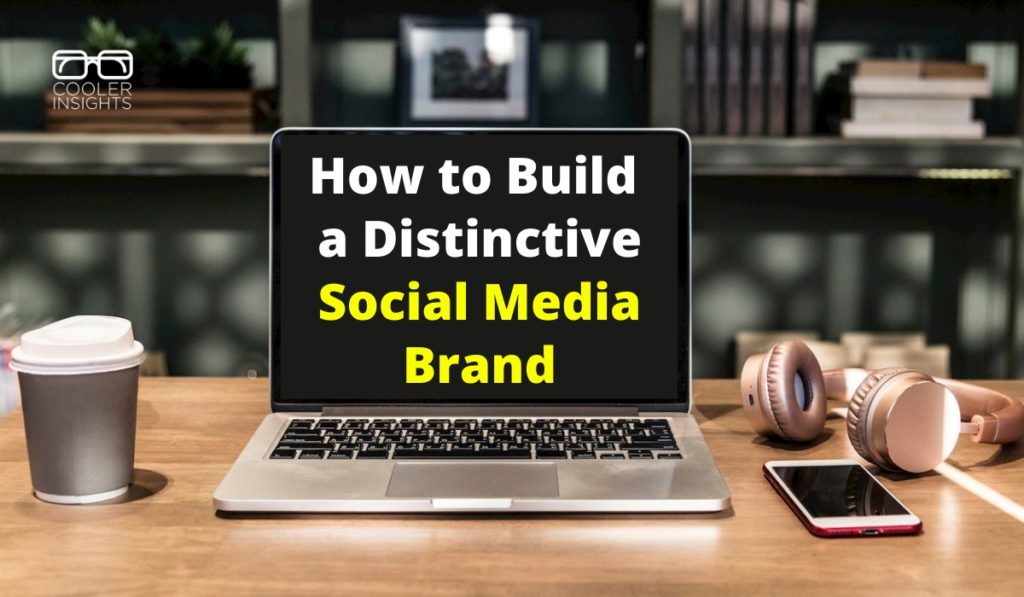
Mockup photo created by rawpixel.com – www.freepik.com
Tried every trick in the social media marketing playbook but failed to generate any revenue?
You may be putting your sales cart before your branding horse.
Time and time again, I’ve come across prospects (especially SME bosses) who hope to “quickly generate leads and sales” before thinking of anything else.
Focused on quick conversions, they continually dangle carrots like deals, discounts, freebies, and other incentives to generate leads and drive sales.
Such short-term tactics are myopic and unsustainable. Eventually, a cheaper, faster, richer and bigger competitor will swallow them up.
But you’re different because you’re here.
In this comprehensive guide to social media branding, you will learn the importance of building your social media brand, understand the four stages of building your social brand equity, and be guided through the six essential steps in building a robust social media brand.
Why You Need a Strong Brand on Social Media
Do you ask your kid to take candy from a stranger? I guess not. Why then would somebody with no clue of who you are buy from you online?
In an increasingly complex and dangerous online world, consumers and corporate clients will sway towards the brands that they know, like and trust.
Overwhelming content clutter is the other challenge which your target audiences face. Don’t believe me? Scroll through your Facebook or LinkedIn feed. Count how many near identical brands scream at you with their irresistible offers.
Consumers are also wary (and weary) of companies which overuse cookie-cutter marketing templates. Often promoted ad nauseum by Internet marketers, these “set it and forget it” affiliate-marketing formulas are so similar that they are indistinguishable (and scary looking).
To stand out from the rest, you need to build a unique yet valuable online brand. One that your prospects can appreciate and grow to love over time.
Building your online brand also helps you to cut through the sea of similarity. It establishes your company and product brands as being respected, reliable and reputable.
The Four Stages of Social Brand Equity
A key reason for building your social media brand is to strengthen what I call your social brand equity (or social media brand equity). This can be defined as follows:
Your social brand equity is the value of your online brand based on your potential and existing customer’s perception and experience of your brand on social media channels. A positive brand equity allows you to charge a premium over your competitors, while a negative brand equity reduces your worth relative to others.
To understand the different stages of your social brand equity, it is useful to map out your social media marketing funnel.
Here’s how it could look like, aligned to the different stages of your marketing goal: Awareness, Consideration, Conversion and Loyalty.
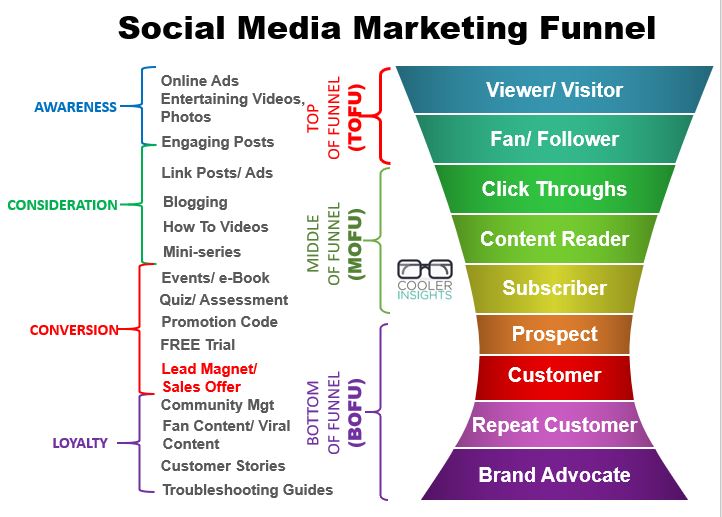
If we equate the different stages of your customer’s buying journey to their relationship with your brand, your funnel may look like this:
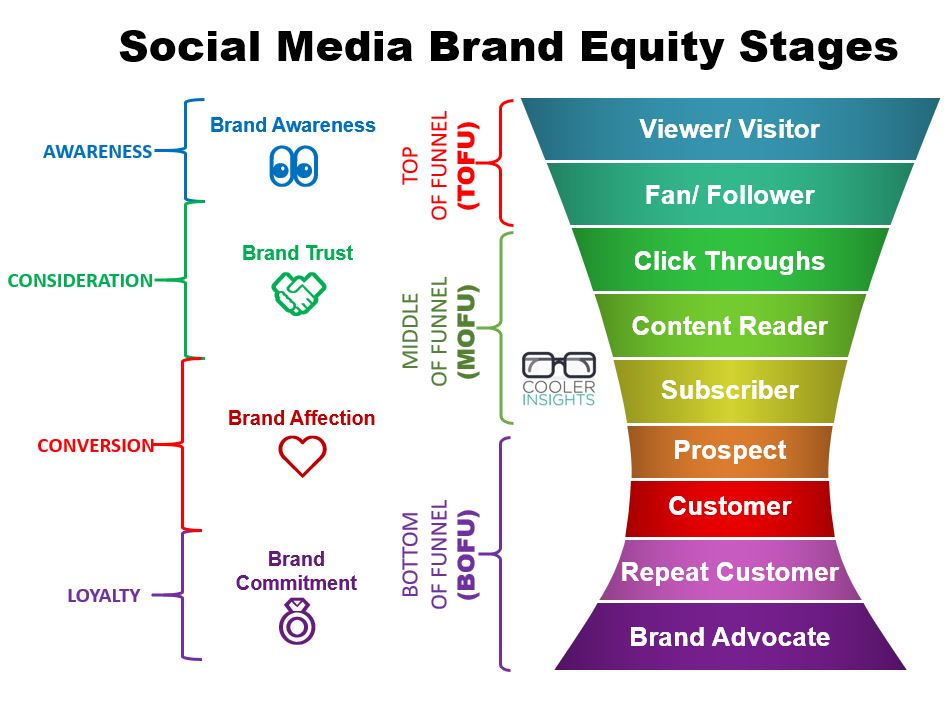
Let us look at each of these brand building stages in detail.
#1 Brand Awareness
Your goal here is to attract and sustain the attention of your potential customers. Hence, the emphasis would be on “light-weight” easily digestible content that generate awareness while adding entertainment (or edutainment) value to your visitors or viewers.
At the same time, you should ensure that elements of your brand are evident to your audience (eg use of colours and imagery, tone of voice, logos, etc).
Grab Attention: Think of this stage as one where you ask a potential date out by attracting him or her with your charisma, witty remarks, or guitar playing skills!
#2 Brand Trust
At this next stage of building your brand equity, your focus should be to educate and engage your fans so as to build trust. By doing so, you can also get them to consider your brand favourably among competing options.
The content here would be heavier on education and value, with more brand related messages. However, you should not overwhelm them with your offer until the next stage.
Win Respect: If we use the same analogy of a budding relationship, building brand trust would equate to paying for the first date with your girlfriend or boyfriend!
#3 Brand Affection
Here, your goal is to build on your prospect’s trust in your brand and nurture it to become brand love. When that happens, they may then invest themselves in your brand through two ways:
- Become a Subscriber or Member: This is where you can reach them through emails, Instant Messages, or other direct communication platforms.
- Become a Customer: This is where your prospect will invest actual dollars and cents in your products or services.
Confirm Relationship: At this stage of your relationship, you may formally ask your significant other to be a girlfriend or boyfriend. The relationship becomes semi-formal, and you spend on each other.
#4 Brand Commitment
Finally, and very importantly, you need to have a way of building long-term commitment and loyalty to your brand. This should be done by providing a differentiated brand experience and over-delivering of value to your customers.
You may also wish to get them so invested in your brand that they’ll willingly recommend you to their friends, family members and associates.
Formalise Marriage: Here’s where your relationship with one another is legally bound through a marriage contract. But what’s more important is that your (now) spouse is happy to let her friends know who you are and the role you’re playing in her (hopefully blissful) wedded life!
Now that you’re acquainted with the four different stages of your social brand equity, let us next look at the step-by-step process of building a strong social media brand.
How to Build a Robust Social Media Brand
In this section, we will cover the six steps you can take to build a trustworthy and likable social media brand.
#1 Begin with Your Social Brand Purpose
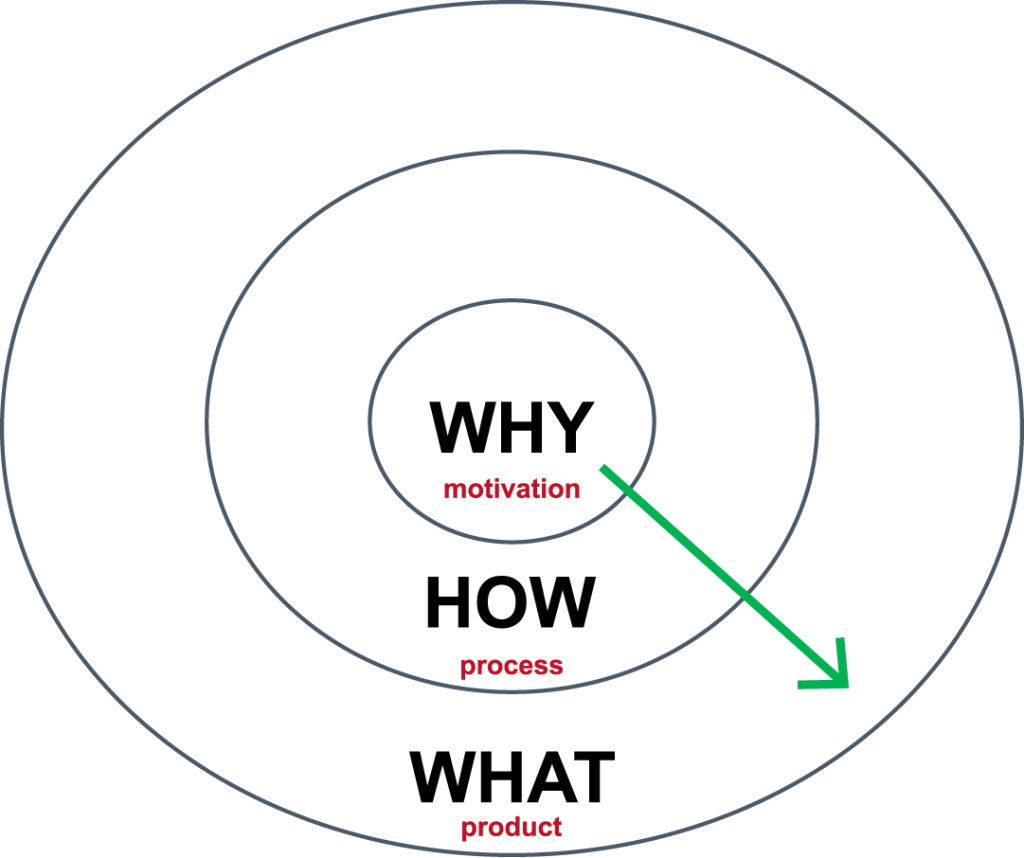
Simon Sinek’s “Start With Why” provides a good basis for you to build your online brand. Quoting from the book:
“People don’t buy what you do; they buy why you do it. And what you do simply proves what you believe” ― Simon Sinek, Start with Why: How Great Leaders Inspire Everyone to Take
In considering your brand purpose, it is useful to consider the following elements:
- Brand Genesis: What is your company or product’s founding story? Why does it exist? Describe the inspiration behind the origins of your brand.
- Brand Mission/Vision/Goal: What are the core purpose statements driving your brand? Is there are long-term purpose which you seek to fulfill?
- Brand Promise/ Unique Value Proposition (UVP): This is equivalent to the guarantee and assurance that your brand can give to customers. What makes you different from your competitors? How can you position your brand in a way that is easily distinguishable?
- Brand Movement/ Cause: Are you driven by a bigger and wider noble purpose beyond just making money? What is this goal? (Note that it should be tied to your Why statement.)
#2 Create Your Social Brand Persona/ Archetype
Imagine that your company, product or service brand is a person, an animal or a vehicle.
Ask yourself the following questions:
- Which famous personality or celebrity would represent your brand?
- What about the character that your brand plays? Would she be fun and playful, or serious and sincere?
- What would the personality traits of your social brand be?
- What are the actions that such a persona would take?
Based on these brand attributes, you may create a brand personality for your social brand. This is defined by Jennifer Aaker as the “set of human characteristics associated with a given brand.” There are five main dimensions altogether:
- Sincerity: These are wholesome, down-to-earth, girl-next-door, honest and cheerful brands. Milo is a good example.
- Excitement: These are daring, spirited, unconventional and contemporary brands. Airbnb is an example.
- Competence: Competent brands are reliable, knowledgeable and even sagely. Google is probably a good example here.
- Sophistication: These are the upper class, charming and stylish brands. Most fashion labels like Chanel, Prada, and Gucci would belong here.
- Ruggedness: These are the outdoorsy, tough and active brands. Timberland and North Face would be prime examples.

In developing your social brand persona, it is useful to consider matching it against one of the brand archetypes as shown below. There are 12 altogether, and they are based on psychologist Carl Jung’s work. These are more elaborate descriptions of the values and behaviours that you’d expect your brand to have. (You can read more about them here.)
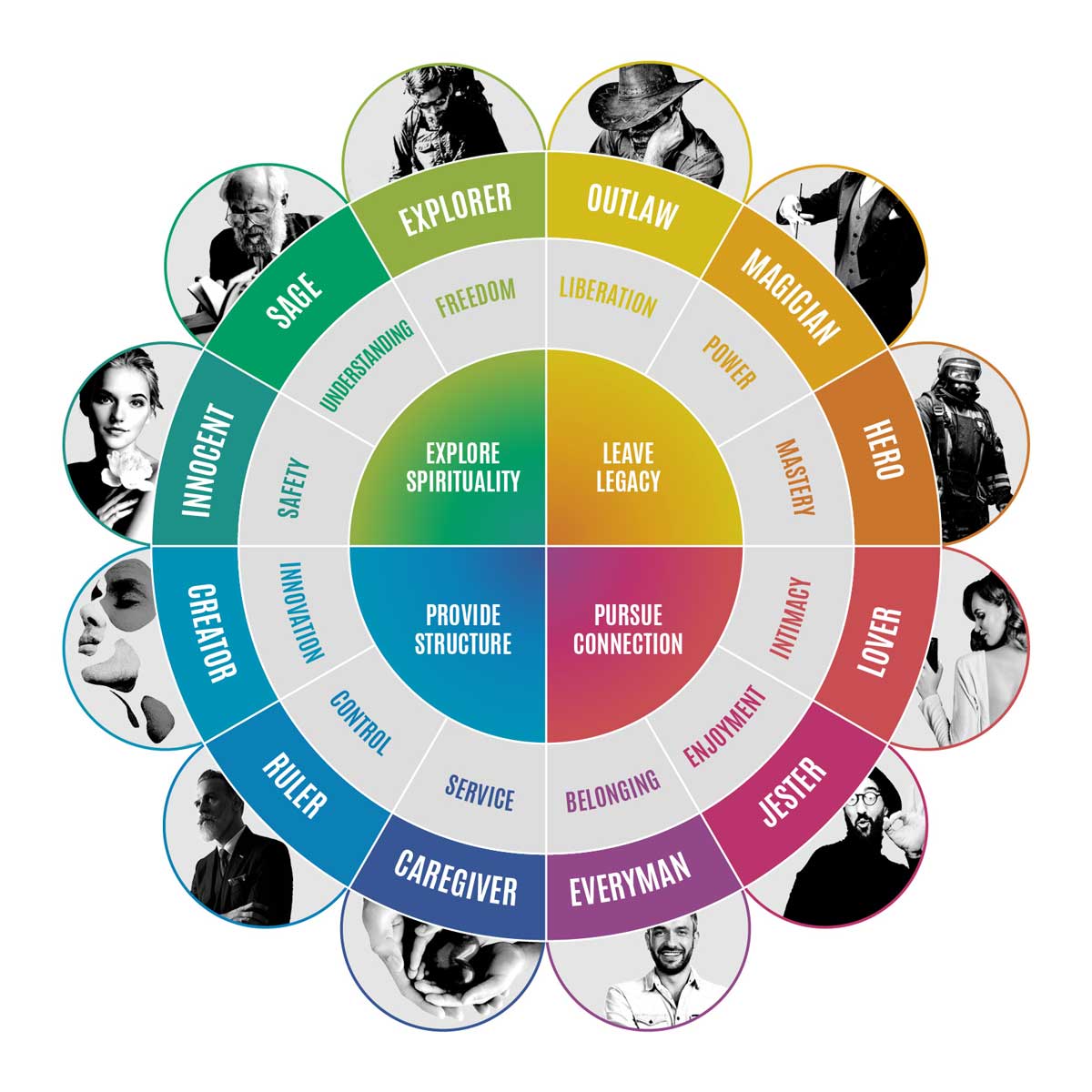
Courtesy of Just Creative
#3 Design Your Visual Brand Identity
Like any traditional marketing efforts, building your online brand requires you to have a unique and distinctive visual brand identity.
There are several fundamental aspects in brand design that you should consider here:
- Logo: Do you have a product or corporate logo that is easily identifiable? Does it instill confidence in your audience?
- Social Profiles: Consider the designs used for the cover images and profile images on your social profiles. Are they consistently applied across multiple social media channels?
- Post Templates: Consider using a consistent template in your social media posts, be it an infographic, image post, video, or story (Facebook or Instagram). The best templates are minimalist and discreet in nature.
- Brand Images/ Video Footages: Do you have guidelines on the type of images that go well with your brand? What about video footages? Are they more cartoonish in nature, or do you prefer to use real-life humans? Consider making your look consistent across your different social channels.
- Colours and Motifs: Are there certain unmistakable colours, shapes and motifs that characterize your brand? Good examples here are McDonalds and Coca-Cola—the design elements for both brands are well-reproduced and easily identified on their social media channels.
- Typography: Is there a certain consistent font that you apply across all your social media posts? Are they coherent with your offline marketing materials?
In most cases, your organisation should have a brand style guide to cover all of these visual and aesthetic design elements.
Rule of Thumb: Ensure that your online and offline brand designs are coherent while providing enough flexibility for adaptation and imagination.
#4 Develop Your Social Brand Voice and Tone
Once you’ve got your social brand aesthetics nailed, you need to think about your brand message.
Here, you need to consider several dimensions of your brand copy.
Style means the mechanical or technical aspects of writing and may be specific to the requirements of the subject or topic. Voice means the unique worldview and word choices of the author. Tone means the attitude conveyed in the writing and may encompass formality, objectivity, intimacy, and similar aspects.
- Voice: Your brand voice reflect the unique worldview of your brand. It reflects your brand’s personality, character, and beliefs, as captured by the words and phrases that are used. Thus it should be unchanging and consistent with your brand. See the chart below for examples of your social media brand voice.
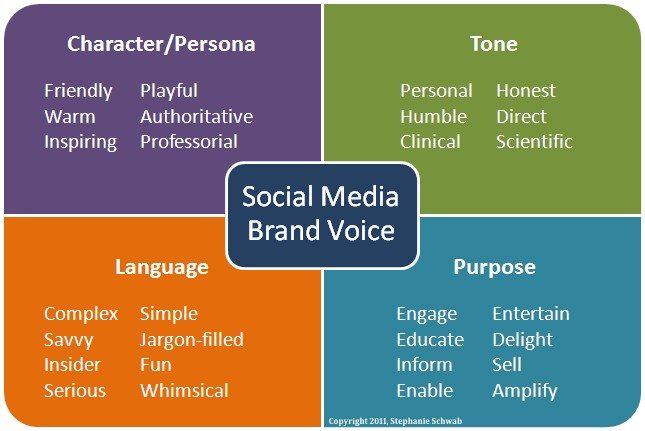
Courtesy of Buffer
- Tone: Your tone is a subset of your brand voice. It may vary depending on the particular context in which your social media posts are applied. It is the emotional inflection applied to your brand communications.
- Taglines/ Slogans: Depending on your organisation’s needs, you may or may not have taglines or slogans to represent who you are. While these may be campaign specific, you may also have scenarios where they will take heed from an evergreen phrase.
- Scripts/ Phrases: Sometimes, it is useful to have a collection of sentences or phrases or scripts that epitomize your brand. Do allow for flexibility however—you do not want your posts and replies to sound like a bot (even if they’re generated by one!)
- Boilerplate/ Elevator Pitch: Your boilerplate is a paragraph of text which gives a snapshot of who you are as a brand. Think of it as a calling card or an elevator pitch, where you describe your brand in as perhaps 50 to 100 words or so.
#5 Produce On-Brand Content and Customer Interactions
After you’ve got your brand identity and brand voice ironed out, your next task is to ensure that your social media brand communications and interactions are…
- Consistent with your brand purpose and brand persona
- Compliant with your brand style and brand voice
- Calibrated to the unique needs, wants and expectations of your audiences
To ensure alignment, it may be useful to develop a brand bible covering all of these elements. You may also want to specify your brand customer service standards—these should include a comprehensive set of Frequently Asked Questions (FAQs) and possible answers for every scenario.
For larger firms, you may even wish to develop an online brand crisis comms SOP. These would cover how the brand is anticipated to behave in certain situations and circumstances.
#6 Nurture Your Brand Communities
The last step in building your social brand is to nurture fans for your brand. They could be your Facebook fans, Instagram and Twitter followers, LinkedIn connections, or YouTube subscribers.
To cultivate brand love and grow your brand communities, consider adopting these best practices:
- Post regular and frequent content updates that speak to your community’s needs
- Avoid overselling—focus your posts on being helpful rather than perpetually pitching products
- Mix and match your branded content types—include videos, images, infographics, text posts, and articles
- Focus on the vital few. It is better to have 1 or 2 social media channels that you manage well rather than 10 different channels that are poorly managed.
- Engage with your fans proactively. Respond to their comments regardless of whether they are complaints, compliments or just neutral feedback.
You should also nuance your interactions according to the characteristics of that platform. For example, users on a channel like TikTok are unlikely to be interested in very heavy-handed B2B content (“Download our white paper here!”).
Conclusion
Building a distinctive brand on social media requires both discipline and determination.
To position your brand favourably against a sea of competitors, you need to start with a strong and sturdy foundation of online brand building.
I hope that these pointers are useful in your journey in building a social media brand for your company, product or service.
What are the biggest challenges faced in building a social media brand?

